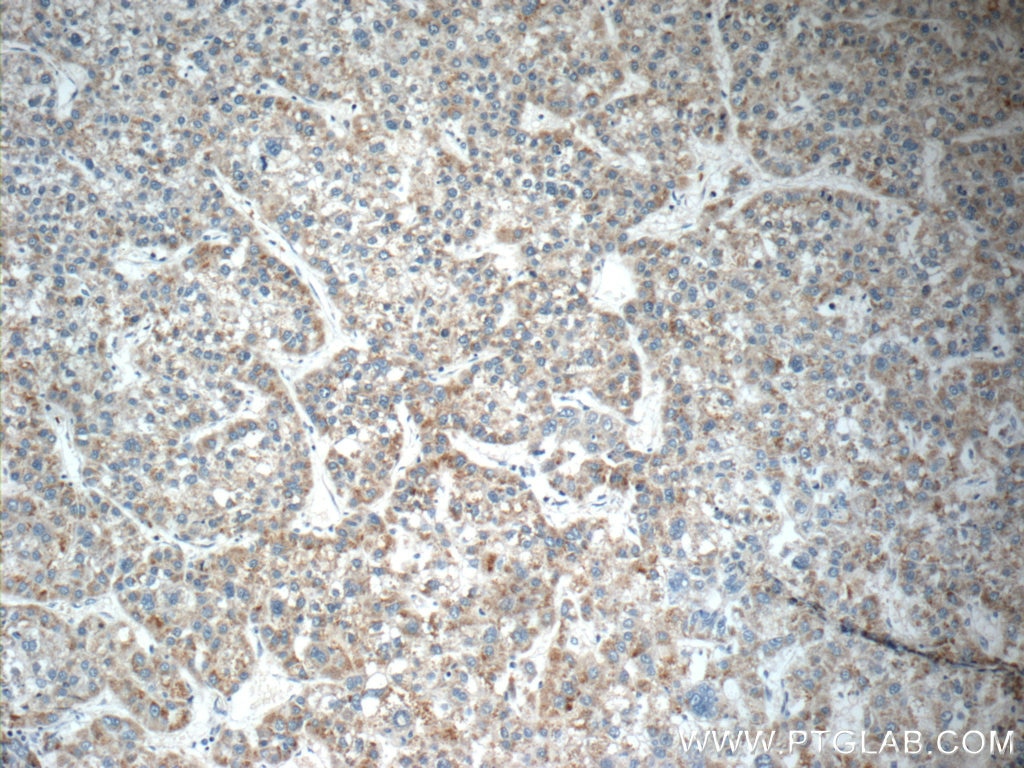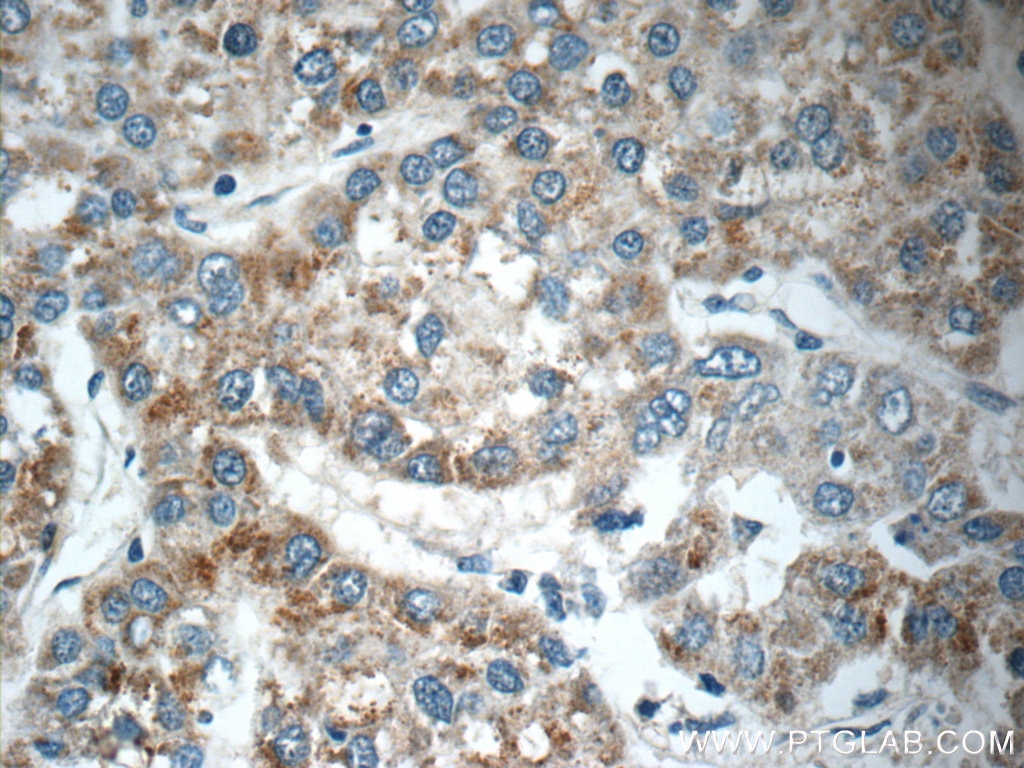Tested Applications
| Positive IHC detected in | human liver cancer tissue Note: suggested antigen retrieval with TE buffer pH 9.0; (*) Alternatively, antigen retrieval may be performed with citrate buffer pH 6.0 |
Recommended dilution
| Application | Dilution |
|---|---|
| Immunohistochemistry (IHC) | IHC : 1:20-1:200 |
| It is recommended that this reagent should be titrated in each testing system to obtain optimal results. | |
| Sample-dependent, Check data in validation data gallery. | |
Published Applications
| WB | See 3 publications below |
Product Information
11689-1-AP targets DUSP10 in WB, IHC, ELISA applications and shows reactivity with human, mouse, rat samples.
| Tested Reactivity | human, mouse, rat |
| Cited Reactivity | human, mouse |
| Host / Isotype | Rabbit / IgG |
| Class | Polyclonal |
| Type | Antibody |
| Immunogen |
CatNo: Ag2302 Product name: Recombinant human DUSP10 protein Source: e coli.-derived, PGEX-4T Tag: GST Domain: 1-200 aa of BC020608 Sequence: LCDNSLQLQECREVGGGASAASSLLPQPIPTTPDIENAELTPILPFLFLGNEQDAQDLDTMQRLNIGYVINVTTHLPLYHYEKGLFNYKRLPATDSNKQNLRQYFEEAFEFIEEAHQCGKGLLIHCQAGVSRSATIVIAYLMKHTRMTMTDAYKFVKGKRPIISPNLNFMGQLLEFEEDLNNGVTPRILTPKLMGVETVV Predict reactive species |
| Full Name | dual specificity phosphatase 10 |
| Calculated Molecular Weight | 482 aa, 53 kDa |
| GenBank Accession Number | BC020608 |
| Gene Symbol | DUSP10 |
| Gene ID (NCBI) | 11221 |
| RRID | AB_10597553 |
| Conjugate | Unconjugated |
| Form | Liquid |
| Purification Method | Antigen affinity purification |
| UNIPROT ID | Q9Y6W6 |
| Storage Buffer | PBS with 0.02% sodium azide and 50% glycerol, pH 7.3. |
| Storage Conditions | Store at -20°C. Stable for one year after shipment. Aliquoting is unnecessary for -20oC storage. 20ul sizes contain 0.1% BSA. |
Publications
| Species | Application | Title |
|---|---|---|
Cell Prolif Bone marrow macrophage-derived exosomal miR-143-5p contributes to insulin resistance in hepatocytes by repressing MKP5. | ||
Cell Death Dis Direct conversion of human umbilical cord mesenchymal stem cells into retinal pigment epithelial cells for treatment of retinal degeneration |






